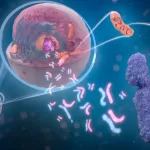The 75th World Health Assembly in May 2022 agreed to the implementation of the new Global Health Sector Strategies on, respectively, HIV, viral hepatitis and sexually transmitted infections for the period 2022-2030 (GHSS). The new strategies propose a common vision to end AIDS and the epidemics of viral hepatitis and STIs by 2030.
For STIs, the GHSS set ambitious targets to:
- reduce new cases of syphilis, gonorrhoea, chlamydia and trichomoniasis;
- reduce new cases of congenital syphilis;
- increase the percentage of girls fully vaccinated with human papillomavirus (HPV) vaccine by 15 years of age;
- increase the percentage of screening of syphilis among priority populations and pregnant women, increase the percentage of screening of gonorrhea among priority populations;
- increase the percentage of women screened for cervical cancer; and
- increase the number of countries reporting antimicrobial resistance in Neisseria gonorrhoeae to the WHO Gonococcal Antimicrobial Surveillance Programme.
In order to accomplish this, GHSS recommends to deliver high-quality, evidence-based, people-centered STIs services across the cascade of STIs care; generate STIs data; engage communities and civil society; and drive innovations for STI prevention diagnostics, testing and treatment.
In light of this, the global response to STIs must undergo a number of strategic and operational shifts:
- creating an environment that encourages individuals to discuss sexually transmitted infections, adopt safer sexual practices, and seek treatment;
- scaling up primary prevention;
- scaling up integration of sexually transmitted infection services;
- increasing accessibility of people-centered services;
- closing funding gaps;
- facilitating the adoption of point-of-care diagnostics and new technologies; and
- investing in research.
WHO will lead a multisectoral coalition of partners, advocates and affected communities to raise and sustain commitment to end the epidemics of STIs. WHO will lead the development of evidence-based norms and standards and promote the use of up-to-date guidelines, tools and service delivery approaches by all countries. WHO will continue to provide technical support to countries to implement their national responses to STIs and will provide leadership to shape the global research agenda for STIs.












